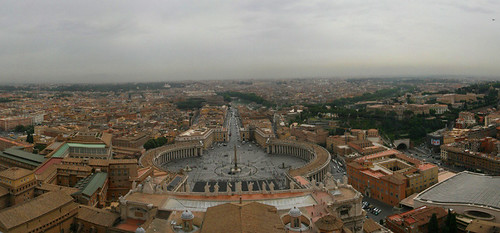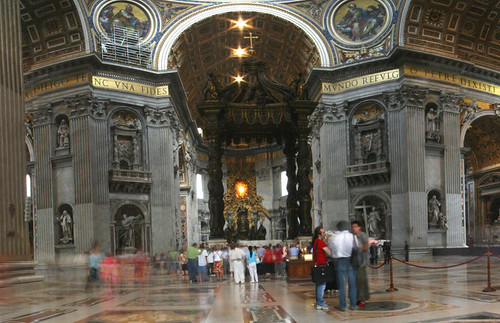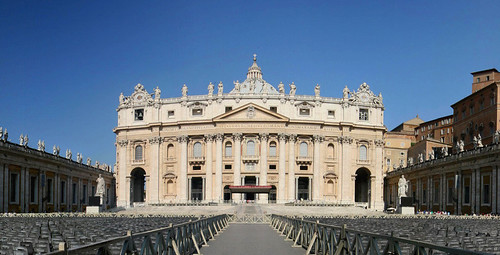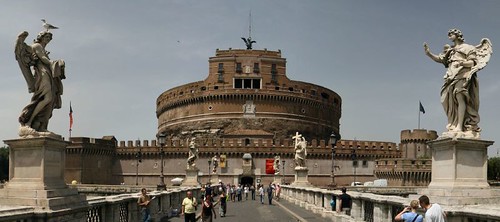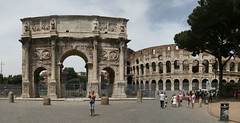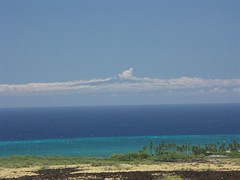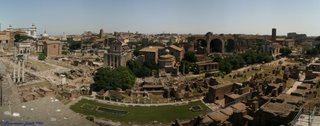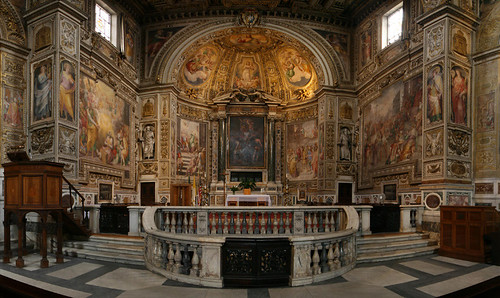 This image of Santa Susanna Chruch in Rome is part of one of the panoramic images found on the PanoramicEarth.com Tour of Rome. There are over 100 images taken from around Rome linked to an interactive map.
This image of Santa Susanna Chruch in Rome is part of one of the panoramic images found on the PanoramicEarth.com Tour of Rome. There are over 100 images taken from around Rome linked to an interactive map.Full 360° panorama of the church of Santa Susanna
The church of Santa Susanna in
There is a story that Susanna had taken a vow of chastity, and yet was being pursued by Maximianus Galerius, adopted son and heir of the Emperor Diocletian. Susanna refused his proposals and then subsequently also refused to offer sacrifices to the pagan gods. This proved too much for the authorities who had her beheaded in her own home.
Today the remains of the Roman building lie visible a glass floor in Santa Susanna's sacristy. They were discovered in 1830 during renovations to lay down a new marble floor. The walls, tiles and mosaics found here may well date back to the original domus of Susanna.
The current church underwent massive renovations around 1590’s under the permission of Pope Sixtus V. Work began in 1588, with the façade being completed in 1603. The interior is decorated with Six immense frescoes by Baldassare Croce on either side of the nave which depict the life of Susanna from the Old Testament. On the whole the church has a lighter feel than many in
In 1922, after a long struggle, American Paulist priests gained permission for Pope Benedict XV to "exercise the sacred ministry to the advantage of the American colony" in Santa Susanna, and the church has been the home for the American Catholic church in Rome ever since. The American embassy used to be close by.
The panoramic image of this location as shown on theFor more articles on Rome see the Rome Index or select one of the labels at the bottom.
